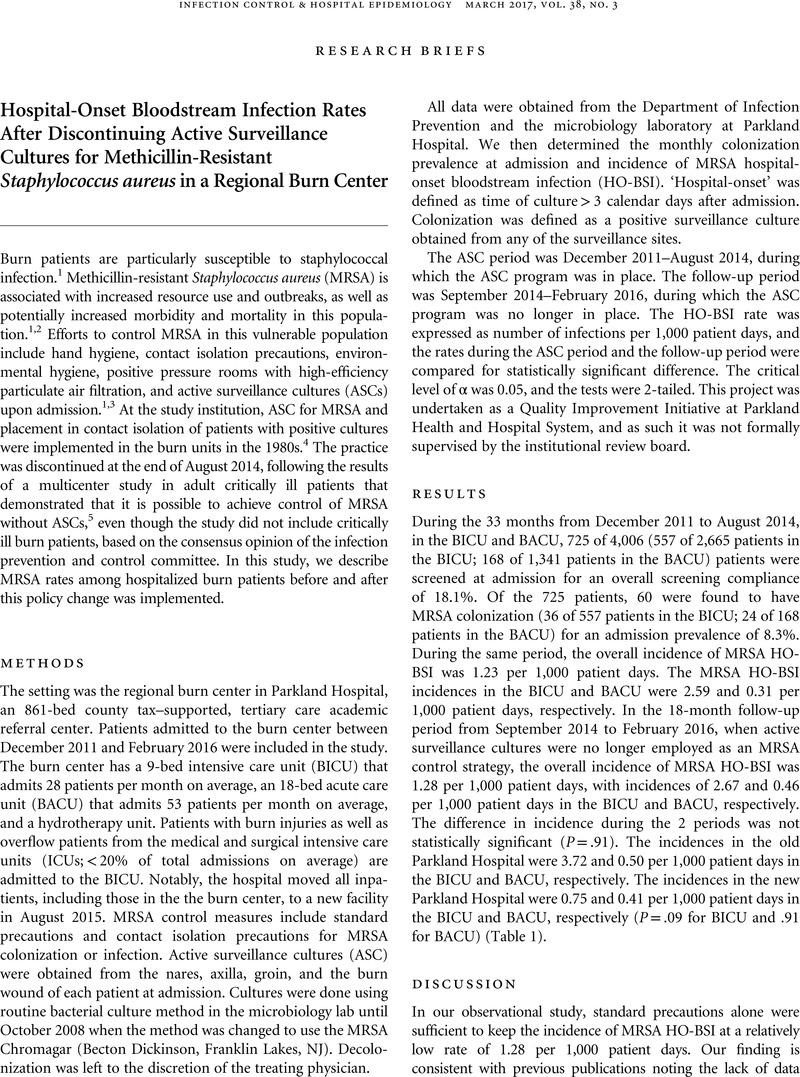Crossref Citations
This article has been cited by the following publications. This list is generated based on data provided by Crossref.
Kalligeros, Markos
Shehadeh, Fadi
Karageorgos, Spyridon A.
Zacharioudakis, Ioannis M.
and
Mylonakis, Eleftherios
2019.
MRSA colonization and acquisition in the burn unit: A systematic review and meta-analysis.
Burns,
Vol. 45,
Issue. 7,
p.
1528.



